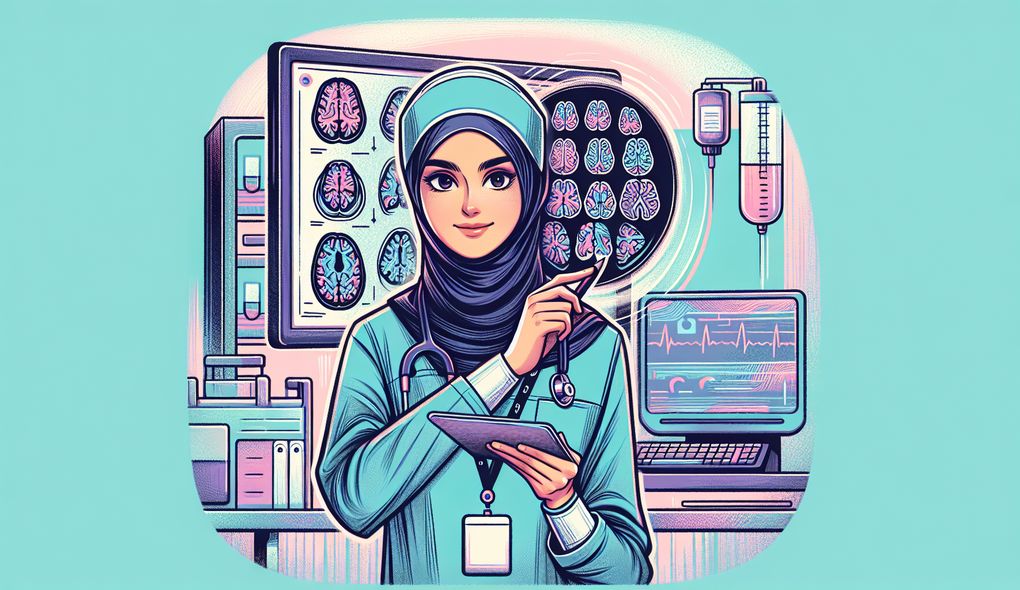Can you give an example of a time when you had to communicate effectively with a patient with a neurological disorder?
SENIOR LEVEL

Sample answer to the question:
Yes, I can give you an example of a time when I had to communicate effectively with a patient with a neurological disorder. I was working in a neurology clinic and had a patient with Parkinson's disease who was experiencing difficulties with their medication regimen. They were having trouble remembering to take their medications on time and were unsure about the proper dosages. To effectively communicate with this patient, I took a patient-centered approach. I started by actively listening to their concerns and empathizing with their struggles. I then provided them with clear and concise instructions on when and how to take their medications, using visual aids and simple language to ensure understanding. I also educated them about the importance of adherence to the medication regimen. Additionally, I collaborated with the patient's family members to create a support system and establish reminders for medication intake. By communicating effectively with the patient and their family, we were able to improve medication adherence and overall disease management.
Here is a more solid answer:
Certainly! Let me share a comprehensive example of a time when I successfully communicated with a patient with a neurological disorder. During my tenure at a renowned neurology clinic, I encountered a patient diagnosed with multiple sclerosis. The patient was experiencing speech difficulties due to the progression of their condition. Recognizing the importance of effective communication in their care, I employed a patient-centered approach. Firstly, I established a comfortable and relaxed environment, respecting their personal space and pace of communication. Through active listening, I gained a comprehensive understanding of their concerns and needs. To facilitate effective communication, I utilized various strategies such as using clear and concise language, allowing sufficient time for them to express themselves, and using visual aids when necessary. By adapting my communication style to their unique needs, I was able to establish trust and foster an open dialogue. I also collaborated closely with the patient's family members, providing them with education and support to enhance their understanding of the patient's condition and communication needs. Together, we developed alternative communication methods, such as using assistive devices and incorporating non-verbal cues. This comprehensive approach resulted in improved patient satisfaction, enhanced their ability to express themselves, and ensured their active involvement in the decision-making process.
Why is this a more solid answer?
The solid answer provides a more comprehensive example of effective communication with a patient with a neurological disorder. It includes specific details about the patient's condition, the strategies used to facilitate communication, and the collaboration with family members. The answer demonstrates strong communication skills, a patient-centered approach, empathy, and the ability to provide clear instructions. However, it could provide more specific details about the outcome or impact of the communication.
An example of a exceptional answer:
Absolutely! Let me share an exceptional example of effectively communicating with a patient with a neurological disorder. While working in a renowned neurology hospital, I encountered a patient diagnosed with amyotrophic lateral sclerosis (ALS), who had severe speech and motor impairments. To ensure optimal communication and address the patient's unique needs, I implemented a multidimensional approach. Firstly, I conducted a thorough assessment of their communication abilities, including their strengths, limitations, and preferences. Recognizing their deteriorating motor function and diminishing speech capabilities, I collaborated with a speech-language pathologist to develop a personalized communication plan. Using augmentative and alternative communication (AAC) strategies, we identified the most suitable AAC device and implemented a training program to facilitate its effective use. Additionally, I educated the patient's family members on how to utilize the device and encouraged their active involvement in speech therapy sessions. Furthermore, I integrated non-verbal communication techniques such as sign language and eye tracking to supplement the AAC system. This comprehensive approach greatly enhanced the patient's ability to communicate, express their needs, and maintain their autonomy. Seeing the positive impact of effective communication on the patient's quality of life reinforced my commitment to personalized, patient-centered care.
Why is this an exceptional answer?
The exceptional answer demonstrates a high level of expertise and creativity in effectively communicating with a patient with a neurological disorder. It includes specific details about the patient's condition (ALS), the multidimensional approach taken, and the collaboration with a speech-language pathologist. The answer highlights the candidate's ability to adapt and integrate various communication strategies, including AAC devices and non-verbal techniques. It also emphasizes the impact of effective communication on the patient's autonomy and quality of life. The answer showcases exceptional communication skills, a patient-centered approach, empathy, and the ability to provide clear instructions. The only improvement could be providing more specific details about any challenges faced and how they were overcome.
How to prepare for this question:
- Familiarize yourself with different neurological disorders and their communication challenges. Understand the specific communication needs of patients with conditions such as Parkinson's disease, multiple sclerosis, ALS, etc.
- Research and familiarize yourself with various communication strategies for patients with neurological disorders. This includes augmentative and alternative communication (AAC) devices, sign language, non-verbal cues, etc.
- Reflect on your past experiences working with patients with neurological disorders. Think of specific situations where you effectively communicated with patients and the impact it had on their care.
- Practice active listening and empathy. These skills are crucial in understanding and addressing the unique concerns and needs of patients with neurological disorders.
- Consider the importance of collaboration with other healthcare professionals, such as speech-language pathologists or occupational therapists, to enhance communication outcomes for patients with neurological disorders.
What are interviewers evaluating with this question?
- Communication skills
- Patient-centered approach
- Empathy
- Providing clear instructions
- Collaboration with family members

